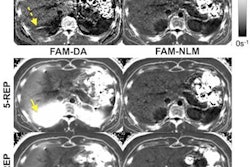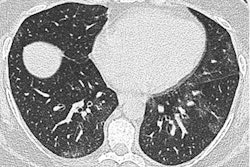Swedish researchers have found that MR spectroscopy (MRS) could replace tissue biopsy to test for nonalcoholic fatty liver disease (NAFLD), according to a study published online on 3 April in Gastroenterology.
The findings are of particular importance to the approximately 25% of adults in Sweden who have NAFLD, many of whom may not know they have the condition. Previous studies have linked a fatty liver with obesity.
This study from Linköping University included 94 people who were evaluated for elevated levels of liver enzymes in the blood. MR spectroscopy measures the percentage of the liver weight that consists of fat, and can even do so when this percentage is very low. Currently, a level of 5% fat in the liver is considered to be the limit for a diagnosis of fatty liver by MRS.
Given that some people with a fat level in the liver less than 5% can suffer liver damage, the researchers concluded that everyone with as low as 3% fat in the liver, as measured by MRS, was diagnosed with a fatty liver when a tissue biopsy was examined in the microscope. Reducing the cutoff to 3% fat will result in 100% accuracy in diagnosis, and the researchers expect to find significantly more people with a fatty liver.
NAFLD is treatable, the researchers noted. Fat in the liver can be reduced by lifestyle changes, which significantly reduces the risk of disease.



















